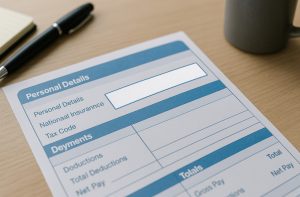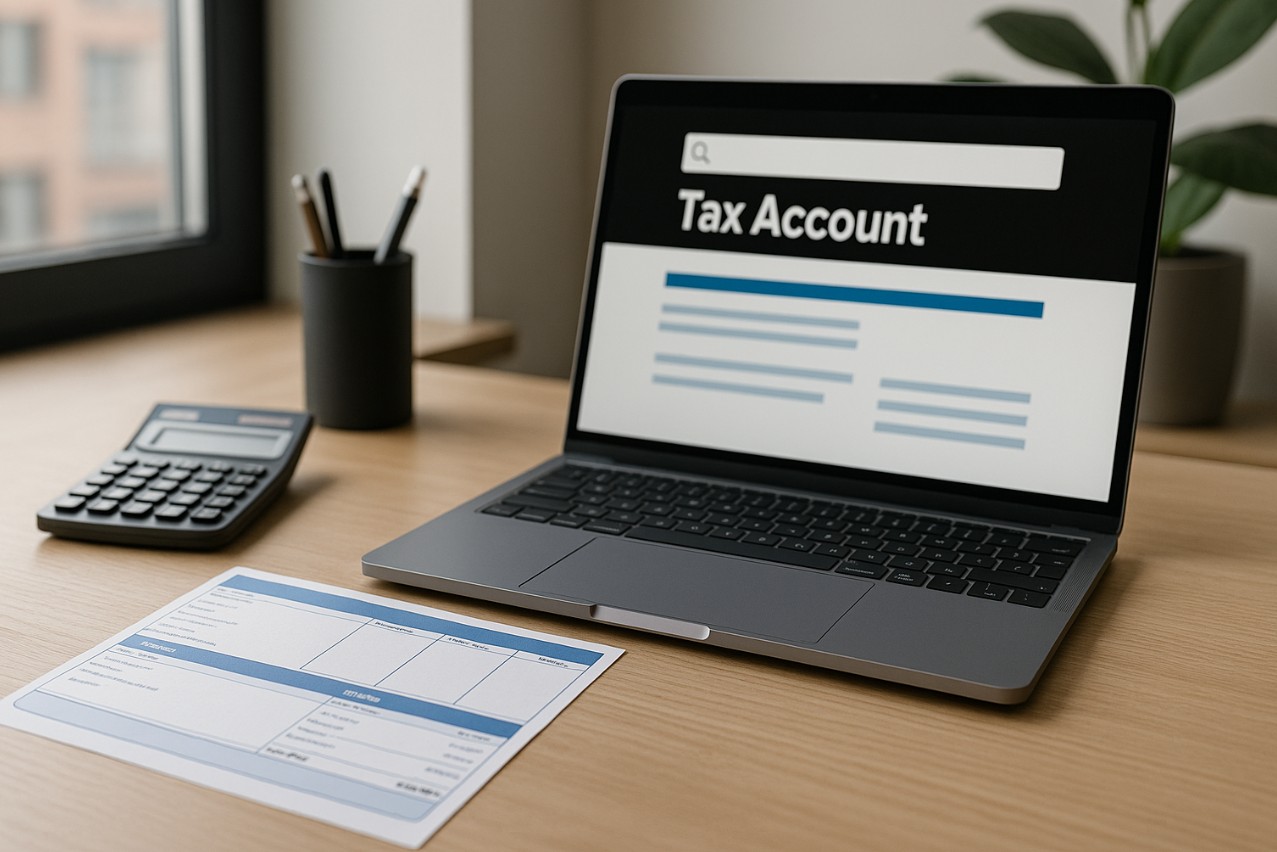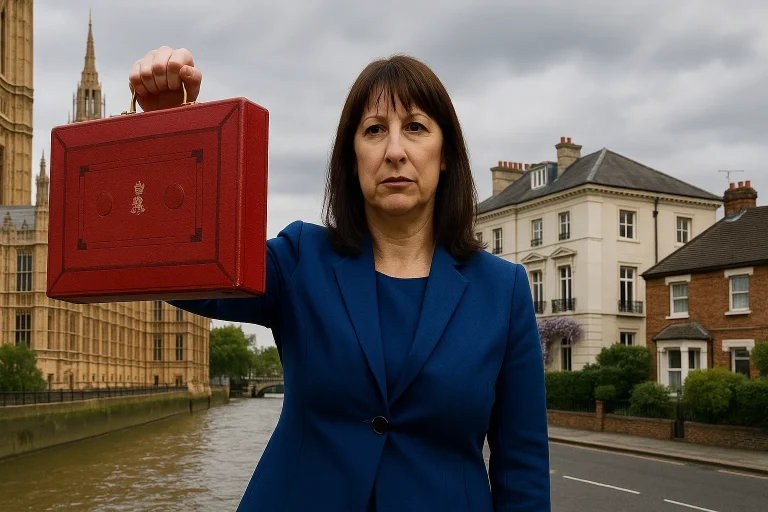Have you ever looked at your payslip and been surprised to see the tax code 0T W1 listed against your name? Do you wonder why more money is being taken from your salary than expected, or if you will ever get it back? These questions are common among employees in the UK, particularly those starting a new job or moving between roles.
The tax system can feel complex, but understanding the meaning of 0T W1, why HMRC applies it, and how it can be corrected is crucial. This guide explains everything you need to know, from how this tax code works to how you can fix it and claim back any overpaid tax.
What Does Tax Code 0T W1 Actually Mean?

The tax code 0T W1 is a type of emergency tax code used by HM Revenue & Customs (HMRC) when they do not have enough information to assign an accurate code.
The “0T” part of the code means that you are not being given any personal allowance. In the UK, most workers are entitled to a tax-free personal allowance of £12,570 per year. With the 0T code, however, all of your income is treated as taxable.
The “W1” part stands for “Week 1 basis”, sometimes also shown as “M1” for “Month 1 basis”. This indicates that the tax is being calculated on a non-cumulative basis. In other words, each pay period is treated as though it is the first week or month of the tax year, without taking into account what you have earned or paid previously.
This combination means you may be paying more tax than you normally would, but it is usually a temporary measure until HMRC updates your details.
Why Does HMRC Put Employees on Tax Code 0T W1?
HMRC generally applies the 0T W1 code in situations where your employer does not have your up-to-date tax details. One of the most common scenarios is when you start a new job without providing a P45 from your previous employment. Without this document, your new employer cannot determine your correct tax position.
It can also occur if you have multiple jobs or pensions and HMRC has not yet allocated your personal allowance correctly between them. In some cases, HMRC may apply this code because your earnings exceed the personal allowance, or because they are awaiting updated information after a change in your circumstances.
Although it might feel unfair to see a larger deduction on your payslip, the code is designed to ensure that the government collects tax while your situation is clarified. Once the necessary information is provided, your code should be adjusted.
How Is Tax Code 0T W1 Different from Other Tax Codes?
Understanding how 0T W1 compares to other tax codes can make it clearer why you are paying more tax under this system.
| Tax Code | What It Means | When It Is Used | Impact on Your Pay |
| 0T W1 | No personal allowance, tax on a non-cumulative basis | Missing or incomplete tax details | Higher deductions until corrected |
| BR | Basic rate (20%) applied to all earnings | Usually for a second job | Consistent tax, but no allowance |
| 1257L | Standard code with £12,570 personal allowance | Most UK employees | Normal tax deductions with allowance applied |
| D0 or D1 | Higher rate (40%) or additional rate (45%) applied | High earners with multiple incomes | All earnings taxed at higher rates |
The critical difference is that with 0T W1 you lose the benefit of the personal allowance, and because it is non-cumulative, the system does not take into account what you have already paid in previous weeks or months.
How Is Tax Calculated When You Are on Tax Code 0T W1?

When you are placed on this tax code, your employer’s payroll system treats every payment as if it is your first of the year. This prevents you from spreading your personal allowance across the tax year, which is why your deductions are often higher.
For example, consider an employee earning £2,000 in a month:
- Under the standard 1257L tax code, the first £1,047 (monthly share of the allowance) would not be taxed. Only the remainder would be taxed at 20%.
- Under 0T W1, the entire £2,000 is taxable because no allowance is applied.
If this situation continues for several months, the difference in take-home pay can be significant. The good news, however, is that once the correct tax code is applied, HMRC can adjust your future payslips or issue a refund to return what you have overpaid.
How Can Employees Check If They Are on Tax Code 0T W1?
The first place to check is your payslip, which will list the tax code currently applied to your income. If you see “0T W1” or “0T M1”, it means you are on a non-cumulative emergency tax code.
You can also log in to your personal tax account on GOV.UK using your Government Gateway ID. This online tool shows your current tax code, your income details, and how much tax HMRC expects you to pay for the year.
If there is still uncertainty, your employer’s payroll department can confirm the code they have been instructed to use by HMRC.
What Steps Can Be Taken to Correct Tax Code 0T W1?
If you find yourself on this code, the solution usually involves updating your records with HMRC and your employer. Providing your P45 from your previous job is often the quickest way to resolve the issue, as it contains details of your earnings and tax paid so far in the year.
If a P45 is not available, you may be asked to complete HMRC’s starter checklist, which allows your employer to provide the necessary information to HMRC. In some cases, you may need to contact HMRC directly, either by phone or online, to ensure they have your up-to-date employment information.
Once HMRC has the correct details, they will issue a new tax code to your employer, and your future payslips should reflect the adjustment.
Will Employees Receive a Refund After Being on Tax Code 0T W1?

One of the most common concerns is whether overpaid tax will be refunded. The answer is yes. If you have paid too much tax while on the 0T W1 code, HMRC will ensure that you are reimbursed.
In many cases, the correction happens automatically through your payroll, meaning you may notice lower deductions in future payslips and even a refund added to your salary. If you leave your job before this happens, HMRC may issue a refund directly, either by bank transfer or cheque, after reviewing your records.
Refunds usually take a few weeks once the correct information has been provided, though the exact timeframe can vary depending on when HMRC processes the update.
How Can Future Problems with Tax Code 0T W1 Be Avoided?
Preventing this situation comes down to keeping your tax records accurate and up to date. Always provide your new employer with your P45 as soon as you start a job. If you cannot, complete a starter checklist promptly so HMRC can allocate the correct code.
It is also worth regularly logging in to your HMRC personal tax account to review your code, particularly if you have more than one job or income source. Informing HMRC of any changes quickly will help avoid being placed on an emergency tax code in the future.
Conclusion
Although seeing tax code 0T W1 on your payslip can feel worrying, it is usually only a temporary situation. By knowing what it means, why it is applied, and how to correct it, employees can take the right steps to ensure they do not overpay tax in the long run.
Providing the correct paperwork to your employer, keeping your records updated with HMRC, and regularly checking your tax account are the most effective ways to resolve and prevent the issue.
FAQs on Tax Code 0T W1
What does tax code 0T W1 mean on a payslip?
It means you are not receiving any personal allowance, and your tax is calculated on a non-cumulative basis.
Is tax code 0T W1 the same as emergency tax?
Yes, it is one type of emergency tax code used by HMRC.
How long will I stay on tax code 0T W1?
You remain on this code until HMRC receives the correct information from you or your employer.
Will I get my money back from 0T W1?
Yes, any overpaid tax will be refunded once your correct tax code is applied.
Can tax code 0T W1 affect student loans or pensions?
Yes, as it increases your taxable income, it can lead to higher deductions for student loans and pension contributions.
What happens if my tax code does not change?
You may continue paying more tax than necessary. Contact HMRC to resolve the issue.
How do I contact HMRC about a wrong tax code?
You can call HMRC on 0300 200 3300 or use your personal tax account online




